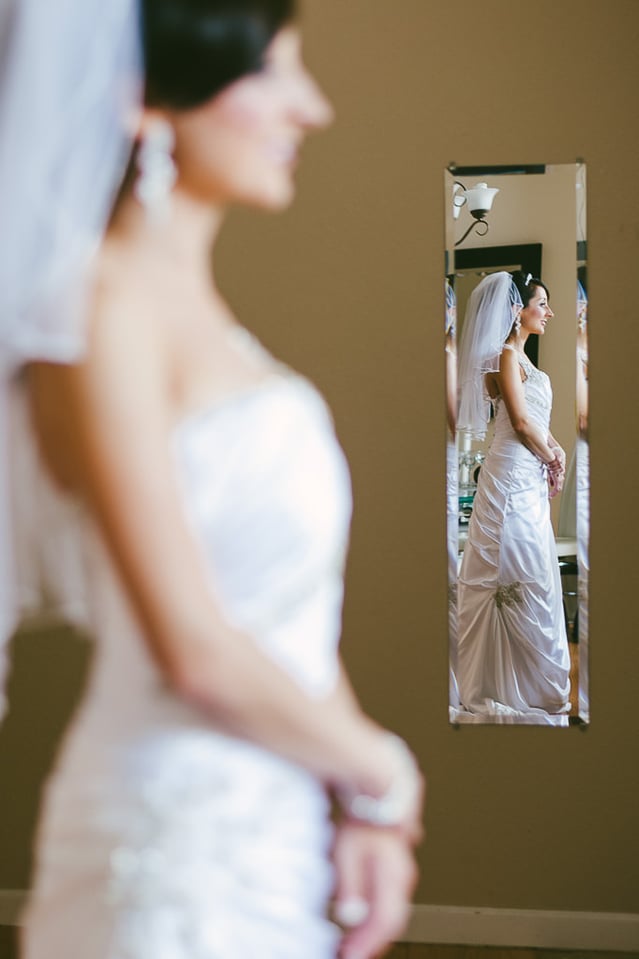Lens Sharpness, Contrast and Color Rendition
As you can see from the below Imatest chart, the performance of the 50mm f/1.8G lens is excellent throughout the aperture range:

The lens starts out very sharp in the center frame, with mid-frame and the corners looking a bit soft in comparison. As you stop the lens down to f/2.8 and smaller, sharpness takes off throughout the frame, with maximum sharpness reaching at the f/5.6 mark, where the lens demonstrates exceptionally good overall performance. The only thing to keep in mind, is that the lens does suffer from focus shift, particularly when comparing wide open performance to f/2.8-f/5.6 range, which is normal for most lenses of this class.


Bokeh
Bokeh is a very important characteristic of 50mm lenses. I would be ready to pay more for a lens that can yield better bokeh, even if it performed slightly worse than others at very large apertures.
Here is the full image from which I made the below bokeh crops:

You can see where I got the center and corner crops from. The corner crop is really not a corner, but rather an area taken from the left-center of the image. Let’s take a look at how the Nikon 50mm f/1.8G compares against other Nikon and Sigma lenses at f/1.8 away from the center:

When compared against the 50mm f/1.8D, the Nikon 50mm f/1.8G clearly yields better bokeh – the borders are much less pronounced than on the AF-D. I would rate its off-center bokeh third after Nikon 50mm f/1.4D and Nikon 50mm f/1.4G. The Sigma definitely has the worst bokeh; it looks as if the highlights were cut on their right side and the bokeh refractions, also known as “Onion Rings” or “Onion Bokeh” are too visible when compared to other lenses.
Now let’s take a look at the center:

Here, you can clearly see how much better the bokeh on the 50mm f/1.8G is compared to the 50mm f/1.8D – take a look at the blue highlight on the right and you will notice a thick white edge. The Nikon 50mm f/1.4G and Nikon 50mm f/1.4D start to show their 9-bladed and 7-bladed diaphragms, which is normal when both lenses are stopped down. At their maximum aperture of f/1.4, the highlights are circular, just like on the 50mm f/1.8 lenses. The Sigma, once again, is showing bad-looking bokeh. I am not sure why, but the background highlights are not even circular – take a look at the bottom right of each highlight to see what I mean. And again, the bokeh reflections inside highlights are the worst on the Sigma.
Let’s see what happens to bokeh when all lenses are stopped down to f/2.8. Here are the off-center crops again:

The benefits of a 9-bladed diaphragm start to become obvious when lenses are stopped down. Surprisingly, despite the fact that the Nikon 50mm f/1.8G has 7 blades like the older 50mm f/1.8D, the bokeh appears more round in comparison. I first thought that I confused the crops while extracting them, but then I checked again and it turned out to be just like I thought – the diaphragm blades on the new Nikon 50mm f/1.8G lens are slightly more rounded, while the blades on both 50mm AF-D lenses are straight. I was able to verify this by physically opening up the aperture on the lens mount and looking through.
Here is the center area crop from all lenses at f/2.8:

Which bokeh rendering do you like the most? All lenses seem to now have pronounced edges that look more or less the same. The AF-D lenses have a somewhat smooth bokeh on the inside, while refractions on both AF-S lenses are visible. When it comes to bokeh shape, I do prefer the rounded bokeh of the AF-S lenses. The heptagon-shaped bokeh on AF-D lenses looks a little distracting to the eye. But that’s me – I know some photographers actually prefer heptagon-shaped bokeh. The Sigma, again, is the worst here.
Overall, the quality of bokeh on the new Nikon 50mm f/1.8G is very good. I like the rounded 7-blade diaphragm, which very closely resembles the rounded 9-bladed diaphragm on the 50mm f/1.4G.
Here are a couple of examples of bokeh when shot at f/1.8 (top) and f/2.8 (bottom):


EXIF data for both shots is embedded into the files.
Vignetting
Most prime lenses heavily vignette when shot wide open and the same is true for the Nikon 50mm f/1.8G, so no surprises here. The good news is that as you stop down to f/2.8, vignetting decreases significantly, and by f/4.0 and onwards it is completely gone. Take a look at lens vignetting at different apertures:

This type of vignetting behavior is expected from large aperture lenses, especially when they are mounted on full frame cameras. Other Nikon 50mm lenses and the Sigma 50mm f/1.4 also show heavy amounts of vignetting at maximum aperture.
When mounted on a DX camera, the amount of vignetting is much less pronounced, with only a slight darkening of the edges at maximum aperture:

When compared to other lenses, the Nikon 50mm f/1.8G vignettes a bit more than its predecessor, the Nikon 50mm f/1.8D, but it outperforms the 50mm f/1.4G, which shows visibly more vignetting at all apertures. The Sigma 50mm f/1.4 is the clear winner here – due to its large front element, vignetting is very minimal at large apertures.
Here is how Imatest measured vignetting on the 50mm f/1.8G:

It is also worth noting that vignetting is significantly higher at infinity focus (particularly at f/2.8 and smaller) when compared to close focus.


Ghosting and Flare
When compared to previous generation Nikon 50mm lenses, ghosting and flare are controlled very well – see the comparison below. I performed a couple of tests with the sun in the frame and both AF-D lenses show some nasty ghosting and flares, while the newer AF-S lenses almost have none. I specifically removed the lens hoods from the AF-S lenses during this test, to show how well they perform in comparison. Part of the reason why the AF-S lenses are so much better, is because the front element on the new 50mm lenses is recessed much deeper inside the lens barrel.

When compared to other Nikkor lenses, the 50mm f/1.8G performs the best here. If you keep the lens hood on the lens, you will get even better results when shooting against a bright source of light. Please note that the above images were taken without any filters. Using UV and other filters can potentially introduce more flares and ghosting to your images.

Distortion
Unfortunately, the Nikon 50mm f/1.8G has a slight amount of barrel distortion (Imatest measured barrel distortion of 0.93%), which is not too bad, but definitely noticeable (the older Nikon 50mm f/1.8D had no noticeable distortion in comparison). Adobe already has a built-in lens profile in the Lens Corrections module, so you can easily take care of the problem with a single click. Here is how the image looks like without any distortion corrections applied:

Note the curved lines on the top and on the bottom of the image. Is distortion a problem? No, not at all – it can be easily fixed in post-processing software like Lightroom and Photoshop (as explained above) without losing much of the original image.
Chromatic Aberration
Lateral chromatic aberration is controlled well, even in high-contrast situations. Surprisingly, compared to expensive lenses like Nikon 35mm f/1.4G, “LoCA”, or longitudinal chromatic aberration (which is the effect of color fringing in front of and behind the focused area) is controlled better. Take another look at the LensAlign crop:

The above image was shot at f/1.8 and lit with 100 watt directional lamps. Stopping down the lens to f/2.8 and beyond dramatically reduces longitudinal CA.
When compared to other 50mm lenses, the Nikon 50mm f/1.8G is on par with the Nikon 50mm f/1.8D in terms of LoCA. The Nikon 50mm f/1.4G and Nikon 50mm f/1.4D are slightly worse wide open and about the same at f/1.8, while the Sigma is again the worst performer, even when stopped down to f/1.8.
Here is how Imatest measured chromatic aberration levels:


Table of Contents